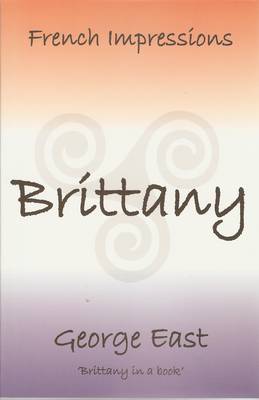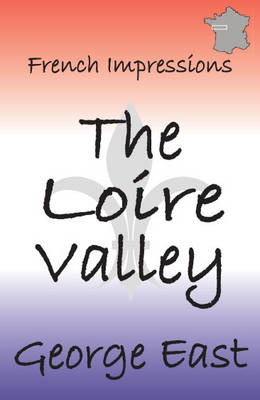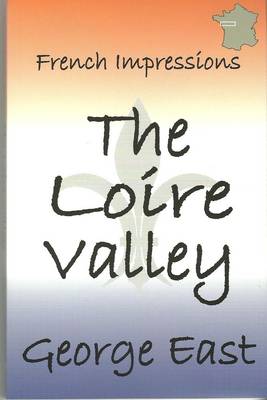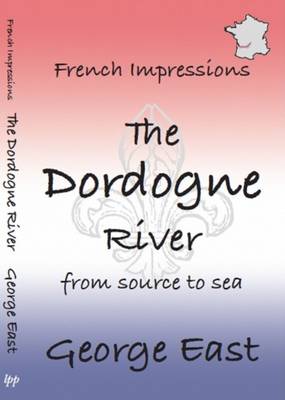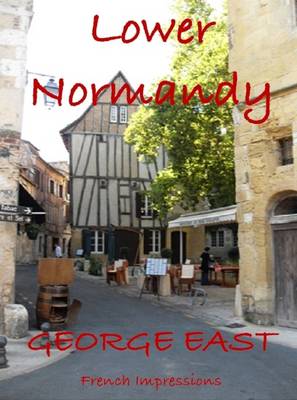French Impressions
4 primary works • 5 total works
Book 1
Did you know - The beret-throwing champion of all France comes from Brittany? The Klingon language is based on Breton? King Arthur and Merlin are buried in seventeen different locations in Brittany? French Impressions - Brittany is packed with facts, legends and off-beat but insightful observations about this most fascinating of French regions. Inside these covers you'll find reviews of more than a hundred Breton towns as well as dozens of classic and little-known regional recipes. You'll also find out what it's like to own property, live, or run a business across the Channel. Or how to protect your house from a thunderstorm with a row of acorns - or unblock a seriously eggbound hen. If anyone should know his onions about France and the French, it's George East. The former nightclub bouncer, private detective, radio DJ, pub landlord and gravedigger has been writing about and messing around in France for more than thirty years. This book is a record of a year spent living in a tiny hamlet in the Monts d'Arree area of Brittany.
Loved by millions of Francophiles and general readers, George's quirky, amusing yet informative style creates a vivid impression of a fascinating region, its people and past. Whichever way you look at it, this is Brittany - and Life - in a book -
Loved by millions of Francophiles and general readers, George's quirky, amusing yet informative style creates a vivid impression of a fascinating region, its people and past. Whichever way you look at it, this is Brittany - and Life - in a book -
Book 2
Yes, we know you know the Loire is the longest river in France. But did you know that one in every 702,203 Americans is named after the Loire Valley town of Nantes? Or that thirteen bottles of Loire Valley wine are sold and drunk somewhere in the world every second? Not all of them are imbibed by the author of this book, though he did his best to up the consumption rate during his year in this fascinating part of France. George East has spent more than a quarter of a century living with the enemy and observing their sometimes funny little ways, and the master raconteur's accounts of his rampaging around France have been enjoyed by millions. Inside these covers you'll find very little about the grand chateaux of the Loire, but a lot about the towns and villages and the people who live in them. You'll also learn about the history and culture and food and drink of the region. Particularly the food and drink. There are also dozens of easy-to-follow recipes for favourite Loirean dishes, from sauteed frogs' legs to roasted swan. One thing is for sure. You will find French Impressions: The Loire Valley different from any travel book you have read.
Unless, of course, you are one of the army of fans who follow their flawed hero on his constant journeying in search of a Gallic paradise and the perfect coffee eclair -
Unless, of course, you are one of the army of fans who follow their flawed hero on his constant journeying in search of a Gallic paradise and the perfect coffee eclair -
Book 2
Yes, we know you know the Loire is the longest river in France. But did you know that one in every 702,203 Americans is named after the Loire Valley town of Nantes? Or that thirteen bottles of Loire Valley wine are sold and drunk somewhere in the world every second? Not all of them are imbibed by the author of this book, though he did his best to up the consumption rate during his year in this fascinating part of France. George East has spent more than a quarter of a century living with the enemy and observing their sometimes funny little ways, and the master raconteur's accounts of his rampaging around France have been enjoyed by millions. Inside these covers you'll find very little about the grand chateaux of the Loire, but a lot about the towns and villages and the people who live in them. You'll also learn about the history and culture and food and drink of the region. Particularly the food and drink. There are also dozens of easy-to-follow recipes for favourite Loirean dishes, from sauteed frogs' legs to roasted swan. One thing is for sure. You will find French Impressions: The Loire Valley different from any travel book you have read.
Unless, of course, you are one of the army of fans who follow their flawed hero on his constant journeying in search of a Gallic paradise and the perfect coffee eclair -
Unless, of course, you are one of the army of fans who follow their flawed hero on his constant journeying in search of a Gallic paradise and the perfect coffee eclair -
Book 4
The Dordogne is the most popular French connection for British visitors, holiday - home owners and settlers. The weather, culture and landscape have come to represent an almost stereotypical image of the country and its people. This ancient and magical kingdom even has a great and iconic river of the same name running through it. The Dordogne emerges as a trickle from the slopes of a (hopefully) dead volcano in the Auvergne, then makes its meandering way westwards to where it empties into the sea to the north of Bordeaux. On its nearly 500 kilometre/300mile journey through the heart of France, the Dordogne constantly changes direction, size, shape and mood as it traverses six departments and five regions. In so doing, it also passes through an ever-changing landscape of surprisingly diverse climates, cuisine and even language. It was alongside the Dordogne that the Hundred Years War came to its bloody climax. In the Black Perigord are said to live the finest truffles in all France. Then there's the variety and cornucopia of grapes and their produce, with Bordeaux being the biggest wine 'capital' in the world.
The most ancient cave paintings are here, and legends abound of fire-breathing dragons guarding hoards of underground treasure. It is here that the residents of Sarlat taught the world how to make cat litter from walnut shells.In all, this feast of history, food, drink and culture offered more than enough of an excuse for travel writer, humourist and plain man's bon vivant George East and his wife Donella to follow the Dordogne from start to finish. They managed to spin out nearly a year of exploring the river, the towns along its banks - and the food and drink of each area. Look inside and you will find some truly remarkable recipes.In all, you can be sure this is not anything like your average travel book. You'll find French Impressions: The Dordogne crammed cover to cover with fascinating historical facts, reviews and recipes. Above all, you'll find it filled with George's sometimes quirky but always affectionate and certainly unique observations on a much-loved area of a great country.
The most ancient cave paintings are here, and legends abound of fire-breathing dragons guarding hoards of underground treasure. It is here that the residents of Sarlat taught the world how to make cat litter from walnut shells.In all, this feast of history, food, drink and culture offered more than enough of an excuse for travel writer, humourist and plain man's bon vivant George East and his wife Donella to follow the Dordogne from start to finish. They managed to spin out nearly a year of exploring the river, the towns along its banks - and the food and drink of each area. Look inside and you will find some truly remarkable recipes.In all, you can be sure this is not anything like your average travel book. You'll find French Impressions: The Dordogne crammed cover to cover with fascinating historical facts, reviews and recipes. Above all, you'll find it filled with George's sometimes quirky but always affectionate and certainly unique observations on a much-loved area of a great country.
6th
The sixth in the popular French Impressions series, taking the form of a personal travel narrative exploring the three departements of Lower Normandy. As well as reviewing more than a hundred towns and villages and tourist attractions, the book looks at the historical events and peoples which helped form the unique character of this part of France.
The book also features the recipes and background to many traditional and unusual Norman dishes. In all, a complete celebration of one of Frances most beautiful and fascinating areas.
From the D-Day Beaches to the birthplace of William the Conqueror, George East's unique style paints a gloriously coloured picture of some of the most visited and intriguing parts of Normandy.
Learn about where your favourite cheese, cream and old and new French recipes come from, and even try them for yourself.
Extract:
`Visitors from across the Channel often say how very much like the rural England of long ago it all looks, though I suspect the locals think it is quite French. But I know what the visitors mean. Increasingly, the British countryside has been riven with roads, and our villages become drive-through reminders of how things were. Across the country it has not been possible to escape the cost of so many people occupying such a small area. It does no good to complain about the inevitable, but here in this peaceful place is a poignant reminder of what we had and what we have lost'.
`As we near the border with Calvados, the columbage and thatched roof count rises rapidly. Fresh flowers are knotted into the ridge of some of the thatches, which is an old Norman tradition. It is said the practice dates back to Pagan times and was an offering to the gods of nature to ensure there would always be food and drink in the home'.
In living memory, the greatest armada the world will ever see brought British and Allied troops to the shores of Calvados to fight on and win the beaches and beyond.
Further along the coast from the D-Day beaches are the iconic resorts which were the playground of the rich and idle in the years between the wars. Inland is an eye-pleasingly variety of crags, hills and valleys, sweet winding rivers and the vast central cereal-growing prairies dotted with villages which sing of the past.
The book also features the recipes and background to many traditional and unusual Norman dishes. In all, a complete celebration of one of Frances most beautiful and fascinating areas.
From the D-Day Beaches to the birthplace of William the Conqueror, George East's unique style paints a gloriously coloured picture of some of the most visited and intriguing parts of Normandy.
Learn about where your favourite cheese, cream and old and new French recipes come from, and even try them for yourself.
Extract:
`Visitors from across the Channel often say how very much like the rural England of long ago it all looks, though I suspect the locals think it is quite French. But I know what the visitors mean. Increasingly, the British countryside has been riven with roads, and our villages become drive-through reminders of how things were. Across the country it has not been possible to escape the cost of so many people occupying such a small area. It does no good to complain about the inevitable, but here in this peaceful place is a poignant reminder of what we had and what we have lost'.
`As we near the border with Calvados, the columbage and thatched roof count rises rapidly. Fresh flowers are knotted into the ridge of some of the thatches, which is an old Norman tradition. It is said the practice dates back to Pagan times and was an offering to the gods of nature to ensure there would always be food and drink in the home'.
In living memory, the greatest armada the world will ever see brought British and Allied troops to the shores of Calvados to fight on and win the beaches and beyond.
Further along the coast from the D-Day beaches are the iconic resorts which were the playground of the rich and idle in the years between the wars. Inland is an eye-pleasingly variety of crags, hills and valleys, sweet winding rivers and the vast central cereal-growing prairies dotted with villages which sing of the past.
